Review: Sony a7r V by Alex Mustard
Field Review: Sony a7R V in Nauticam NA-A7RV
By Alex Mustard
INTRODUCTION
Most serious underwater photographers accept that the future is mirrorless. We know that the manufacturers are focused on these cameras and they are being given the next-generation sensors and the latest shooting technology. But many of us who have tried a mirrorless camera underwater have found them harder and less enjoyable to shoot than our existing SLRs. And most shooters who own final generation SLRs have been happy to stick with them, rather than spend money on something they like less. For me, that perspective changed when I tried the Sony a7R V in the Nauticam NA-A7RV housing. There have already been plenty of full frame mirrorless cameras that outperform my Nikon D850 on paper and on land, but this was the first one I enjoyed shooting underwater more than my SLR. In January 2023 the future has arrived.

DISCLOSURE
The camera and housing were provided by Nauticam, although for me to try for my education, not specifically for a review. However, I felt that the camera is too important a milestone and I really wanted to cover it here. This review is aimed specifically at the serious SLR still shooters out there, who are yet to try full frame mirrorless seriously underwater. I remain an SLR shooter too, although I have always been open to Mirrorless, 11 years ago I wrote the original review of the Olympus OM-D E-M5 for Wetpixel and I was also the first photographer awarded in the Wildlife Photographer of the Year contest with an underwater mirrorless shot 10 years ago. Although my primary systems have remained Nikon SLRs. I guess I was also motivated to write this after we had recording problems, for the second time, on my Wetpixel Live review with Adamski.
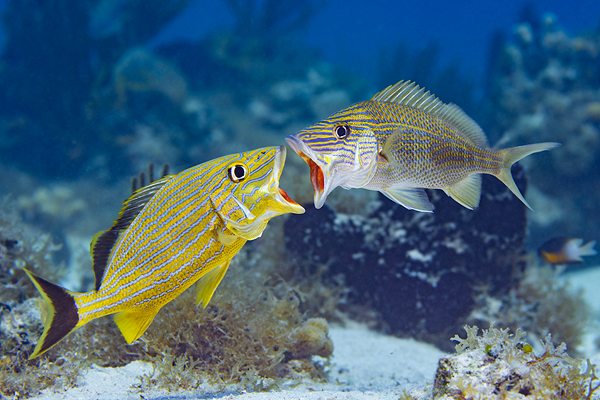
The Sony a7R V is a new camera and I had the first underwater housing for it, allowing me to try it even before most land-photography reviews of the camera had been published. I made 40 dives with the camera in the Cayman Islands, testing it in conditions productive for photography and with which I am very familiar. I was there for two weeks of teaching workshops. On the first workshop week, full frame mirrorless cameras made up more than half of all cameras, for the first time. The camera and housing are now returned to Nauticam.
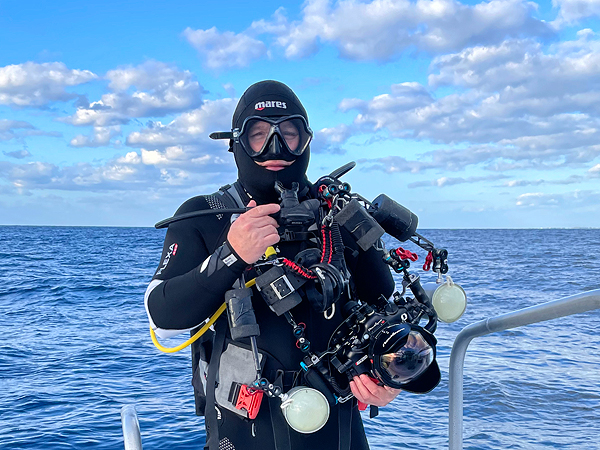
THE CAMERA
The Sony a7R V is the latest installment in a long (and confusing to outsiders) line of Sony a7 mirrorless full frame cameras. To keep it simple, the R series are the high resolution models. The mark V packs 61MP, using the same sensor as its predecessor the a7R IV (although Sony says that the upgraded processor somehow gets more out of it). It looks pretty much identical to the IV too. But as is often the case in our world, it is the seemingly mild upgrades that often produce the cameras that really hit the sweet spot (Nikon D500, Canon 5D Mk4, and D850, please stand up).
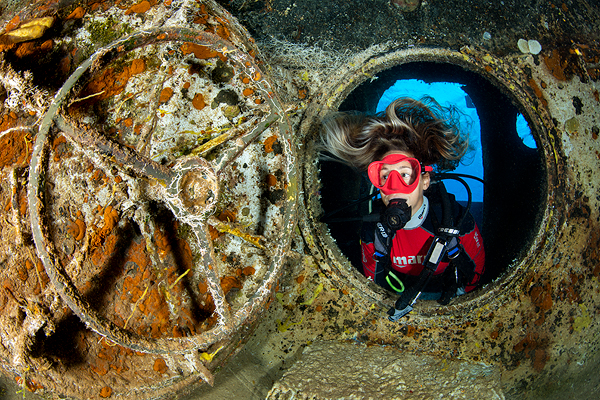
The headline differences in the a7R V are that it inherits the next generation EVF (electronic viewfinder) and Autofocus tech from its big brother the a1. And offers these at a price ($3800 USD, all prices from B&H) that sits in the same bracket, inflation allowing, as the cameras that many of us are already shooting. The a1 is Sony’s top dog ($6500), while Nikon has the Z9 ($5500), but both of these cost twice as much 5Ds and D850s. The issue with these range toppers is just the price. Telling SLR folks that there are mirrorless cameras that are better to shoot underwater than their current camera, but the entry fee starts at twice what you paid for your SLR - before you get into new lenses and housings, just isn’t very convincing!
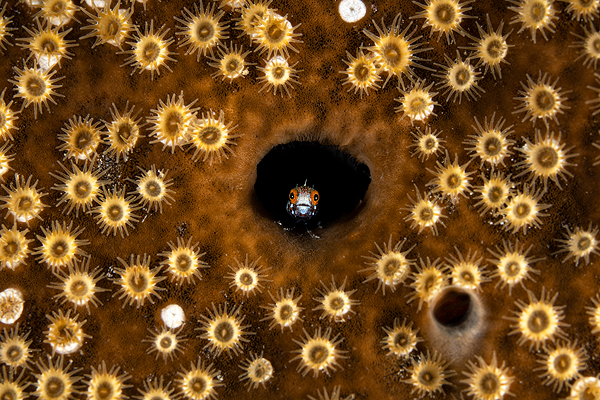
Pound for pound is where the Sony a7R V really hits, it delivers the future at a price point in a tier many serious shooters feel comfortable with. It is a price that is comparable to other popular full frame mirrorless cameras (Canon R5 - $3500, Nikon Z7-2 - $3000). And historically, underwater photographers have always favored cameras that have good AF, and high resolution but don’t have every unnecessary bell and whistle (and importantly the price) of the range toppers. That is why 5D was more popular than 1D, D800 more popular than D4, D850 more popular than D5 etc etc.

LIVING WITH THE EVF
Electronic Viewfinders are clearly the biggest difference between photographing with Mirrorless and shooting with an SLR with its optical viewfinder. They are also the main reason that most current SLR shooters have rejected mirrorless for underwater shooting. And I think that what is not stressed enough is that this is because very typical underwater photography throws up exactly what EVFs struggle with most. Most land scenes are shot without flash and look great through an EVF. Underwater, many classic images have far more dynamic range than the camera can see, which we overcome in the actual shot by lighting the dark parts with flash. For example, a very typical wide angle scene underwater will be a silhouetted subject in the foreground (that we will light) and a bright open water background, with the sun and distant subjects. This is easy to see through an optical viewfinder, but not so on EVFs. This is because with an optical viewfinder, our eye adjusts as we look around the scene showing us detail in each area of the image. With an EVF we rely on the ability of the sensor to have enough dynamic range to show us details in both, and the EVF can struggle.

However, EVFs are not created equal and they are getting better and better all the time. And if you have formed an opinion on them in the past, it is important to remember that they are improving fast with each generation. Above all, it is the EVF of the a7R V that makes it likable underwater. That said it is hard to quantify the ability of an EVF to show dynamic range, but the resolutions listed below at least show the degree that the camera companies are working to improve them. The original Mirrorless I reviewed, the Oly EM-5 had a 1.4 million dot EVF. The Nikon Z6/7/9 and Mk2 versions all have a 3.7 million dot EVF. Canon’s R5 has a 5.8 million dot EVF as does the Sony a7R IV. The a7R V weighs in with 9.4 million dots.

Shooting with an EVF is a different experience from shooting with an optical viewfinder. And while the Sony a7R V clearly has one of the best around, it still does not quite live up to an optical viewfinder with those high dynamic range scenes. That said, I was very happy shooting it, and with the classic dynamic range challenge I could see exactly where the fish was on the reef and also where the background silhouetted diver was posing against the sun. It is the first time I can say that about a mirrorless I have tried. And of course, there are other scenes it does a better job on than an optical viewfinder, such as when shooting macro of the dark subject, because the camera has the ability to brighten the view so that you can see the details. Or if working with critical focus, you can zoom in and check it. These are big advantages over optical. Others rave about shooting manual focus with focus peaking indicator color, that stands out well on the underwater scene, showing exactly when the features you want are perfectly sharp. Or shooting black and white with a black-and-white viewfinder. The list goes on.

I should mention that I was looking at the EVF through Nauticam’s new angled 40˚ 0.8:1 viewfinder, which I have actually been using on my Nikon in its Subal housing. It is an excellent match for the Sony, because its bigger view makes the most of the larger EVF on this camera. Given that you end up using the EVF for everything, a quality viewfinder is a must on a mirrorless.
The really big advantage of an EVF, though, is all the other things it can do. These include showing you your images and allowing you to change any setting through the menu without having to move away from the viewfinder. This not only makes these actions quicker but also means that you move much less, not disturbing a subject or risking stirring up sediment. My good pal, Martin Edge, would always comment about how many SLR photographers would unintentionally scare subjects when reviewing on the LCD, because they would inadvertently thrust the camera forward towards the subjects to be able to see the LCD screen clearly. Viewing the EVF through a corrected viewfinder means that you can do everything easily, checking subject focus or reading menu words clearly with your eye still in place. Reviewing images is particularly important for underwater photographers because we don’t see our strobe lighting when we are composing. Image review is the chance to ensure we’ve got it right, while we can still make corrections. Being able to review instantly through the EVF is great.
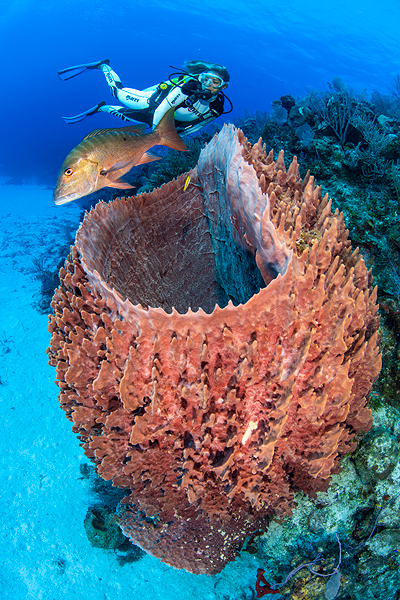
When shooting macro or scenic shots I would leave the Auto-Review on (for 2 seconds), but for action situations (in Cayman this was stingrays and sharks) I would turn it off so that I was not interrupted and would review only when the action subsided. I added this custom setting to My Menu for ease of switching. Finally, being able to review images via the EVF was particularly useful in very bright environments, such as on the sandbar with the stingrays, where usually it is very hard to see the LCD. Looking down the dark viewfinder at the EVF made judging exposure very simple.

The only time I used the LCD (which is 3” and a much lower 2 million dots) was when shooting at arm’s length, sometimes to help aim or just to review. I joked when returning the camera, if Sony offered the camera without an LCD for a few hundred bucks less, I would gladly take it. Although other photographers have commented that they prefer shooting with the LCD, especially when filming or on action-packed dives to be more aware of the surroundings. I use the LCD on my SLRs when shooting vertically down onto a subject or vertically up because the angled viewfinder is uncomfortable at these angles. Switching between EVF and LCD can be assigned to Custom Button C3 (left thumb), which is handy.
Overall, I found the Sony a7R V’s EVF a pleasure to use and while it has strengths and weaknesses compared to my SLR’s optical viewfinder, over the course of my first few dives, I grew to value the strengths far more than I was concerned by any weakness. I preferred it to my SLR, which was a first for me with a mirrorless camera.
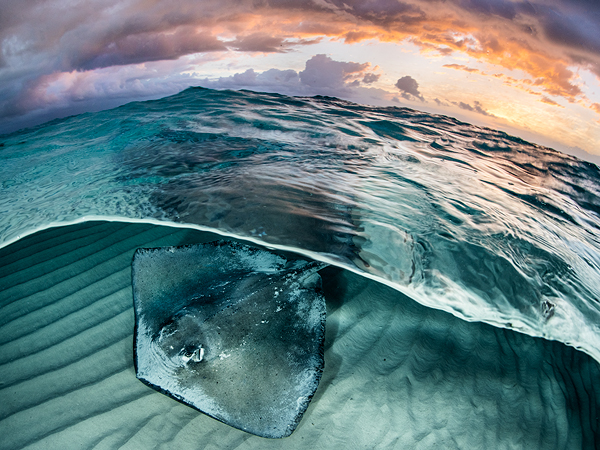
AUTOFOCUS
Since the first Mirrorless cameras appeared, they have been accompanied by the claims of great feats of autofocus. Olympus claimed that the original E-M5 had the world’s fastest autofocus, but it was clear, underwater at least, it was a long way off that generation of SLRs. And this failure to live up to the marketing is something that many underwater photographers have reported when trying different mirrorless cameras ever since. So I don’t make the claim lightly when I say that the Sony a7R V is the best-focusing camera I have used underwater, and it certainly focuses noticeably better than any SLR I have used. Again, the first time I have experienced that with a mirrorless camera.

The Sony a7R V has a very extensive range of autofocus options, I tried many but certainly didn’t try every option, let alone the options on the options. The good news is that it works well in pretty much any mode, and there are many features to explore over time, fine-tuning to the subjects and the way you shoot and enhancing the joy of ownership. I used AF-C throughout, something I always favor in the ocean, where you can expect both yourself and the subject to always be in motion. I mostly used Wide area for wide angle and Zone (a smaller, moveable area) the rest of the time. I favored Zone for shooting fish portraits but also liked Expanded Spot with the macro lens. I used the Tracking mode (Expanded and Wide zones) too, but the camera is so good at identifying and tracking subjects (it’s clear AF strength) that there didn’t seem much point in using the specific tracking mode with the subjects I was shooting.

I assessed the AF of the Sony using native Sony lenses, rather than the Canon 8-15mm on a Metabones IV converter, which did not focus as effectively (it was fast, but hunty). With the Sony lenses the camera would take a fraction of a moment to figure out the scene and then snap into focus and hold onto the subject with the tenacity of a dog with a favorite toy. The camera has a seemingly intelligent ability to correctly guess what the subject of the frame is and to keep it in focus. This makes it a fish photography monster, making challenging species really straightforward to focus on and then track, even when they move behind other objects in the frame. The only downside of this is that the tracking is so sticky that if another subject (say another fish in a group) moves to the front of the composition the camera will often resolutely ignore it, keeping the now obscured original subject in sharp focus! That said the tracking ability (not even in Tracking mode) really is an excellent tool, ideal for compensating for subject movement, photographer movement, or even purposeful recomposition of the frame, all while ensuring the intended subject is bang in focus.

The AF system of the Sony a7R V is an a1 hand me down, and is driven by a new processor, a generation on from that the a7R IV. This extra computing power has greatly increased its Subject Recognition capabilities. There are not any modes specific to underwater subjects, but People mode has no problem recognising divers, but I do not recommend using it in normal shooting – otherwise the camera focuses on the diver and pushes the foreground out of focus! If a model is your main subject, such as in freediving photography, I suspect this mode would be ideal. Animal and Animal/Bird modes would recognise fish about 40% of the times I used them. But, the camera is so good at picking up subjects, I didn’t feel that subject recognition added much. It is most useful on land to help pick out a subject in narrow depth of field amidst a distracting scene. Such compositions are not really that common underwater. Insect mode didn’t work with the underwater invertebrates I tried, but I didn’t have lots to test it on in Cayman. But the take home message is that pretty much irrespective of mode, the camera focuses and tracks like a boss. It has an uncanny ability to identify the right subject in standard modes, that I felt using both Tracking and Subject Recognition modes was pretty unnecessary.

Mirrorless cameras have these clever focus capabilities because they use the data from the actual sensor to focus. DPReview state in their review of the camera, published this week, that the a7R V has “probably the most effective AF system currently on the market”. But as those previous mirrorless claims have taught us, underwater, when using sensor data for AF, it is crucial to evaluate AF performance in our world. The autofocus advantage of a7R V reduces noticeably as underwater levels reaching the sensor get darker, less contrasty and more monochromatic. In bright reef conditions the Sony a7R V focuses markedly better than my SLR, but in darker, more monochromatic places, its advantage diminishes. I’d like to try in temperate waters and on muck diving (please Nauticam lend me the camera again!) to get a better handle on how conditions impact its performance. It would definitely struggle much more to focus on subjects sheltering under dark overhangs, with bright water between me and the subject. I also feel that this explains some of the issues with the Canon 8-15mm AF, which I typically used on deeper wall dives. A positive of using the entire sensor for focusing allows pretty much all mirrorless cameras to focus at any point in the frame.

I briefly tested the a7R IV and a1 cameras on dives during this trip. It was instantly clear that the a7R V outperforms the IV, but in my briefer test with the a1 I couldn’t discern a difference. These comparisons were made possible because friends on my workshops lent me their cameras and this was not a focus of this review. But from the specification I would expect the a1 to be a bit better, at least in theory. Even testing briefly, the V is clearly much closer the a1, than the IV is to the V.
In summary, the autofocus of the a7R V is excellent, it feels a generation on from any SLR I have used, and was a major reason for enjoying shooting the camera so much.
STABILISER
Mirrorless cameras have high levels of in-camera-body stabilisation allowing us to push out shutter speeds when shooting non-moving available light images. The a7R V boasts improved stabilisation of up to 8 stops more resistance to camera shake over non-stabilised images. I did not test this. But I did shoot hand held, available light images down to ¼ sec that were sharp.

The stabilisation also did not impact on long exposure images, such as panning and blurs, which worked as normal. I did feel the Sony had the slightest shutter lag compared to my SLR, but that could easily be me having one of the many settings slightly wrong.

BATTERY LIFE
With power hungry EVFs and big sensors doing all the focusing, mirrorless cameras are known for munching batteries faster than SLRs. But we’re now many generations into these cameras, and as their battery performance improves, range-anxiety is becoming a thing of the past. Furthermore, the Sony shows you a constant percentage remaining, although I never tested how accurate this is. I know I typically shoot more frames per dive than most photographers, especially so when I am testing different aspects of a camera. After two dives in Cayman the battery still showed between 55% and 40% remaining. Because that was lunch and I had two batteries, I would change at that point. There are plenty of D500 shooters who change after two dives for the same reason. I was quite content with this battery life being practical for underwater photography. I also feel that the Sony would have coped with three dives for most people, although I do note that I was using brand new batteries and I was in warm tropical water. I know people are concerned about batteries because of the need to open cameras on boats. I started in the film era, so I have no such concerns, but I would add that any boat that you plan to make more than two dives on, will surely have a space suitable for changing batteries.

HOUSING
There is little to say about the Nauticam NA-A7RV, which I mean as a great compliment. It was totally reliable, very easy to live with and ergonomically superb. It is a quality product that I felt comfortable with from dive one. It is very similar to their other Sony housings, that many people are familiar with. Nauticam’s Sony housings are smaller than their SLR housings, with a smaller port size (N100). This must surely make them attractive for pelagic work chasing bait-balls, whales, dolphins etc. Despite the housing being smaller than my own Subal D850 housing, they both weigh the same (2.7kg) and even if you are coming from a heavier SLR housing, the system weight with all the same domes, strobe arms and strobes as usual means there is no significant weight saving from going Sony mirrorless. The exception to this is using the WWL, which cannot be used with SLRs, which require the heavier WACPs. I feel that if Sony ever make a native E mount fisheye lens, it may be quite short and this is likely to require a custom port, as it could well be too short for the existing ports and the N100-N120 port adaptor.
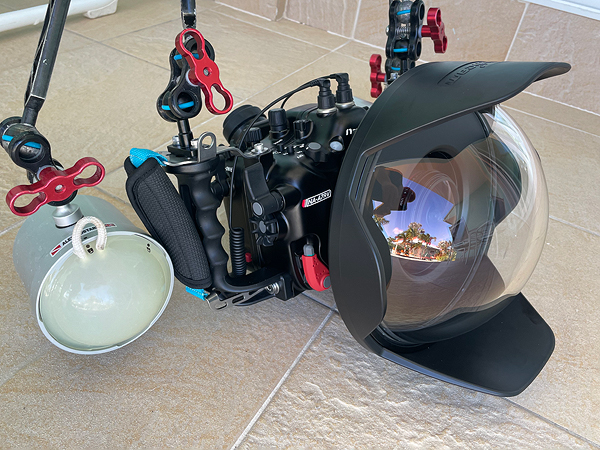
FLASH TRIGGERS
I tested two different flash triggers with the housing. For the first week I used Nauticam’s in-house trigger, which is in a neat little plastic box and clips simply on top of the housing. This had not been tried with the new a7R V before and had not been calibrated to that camera. This meant that it was limited to a 1/200th flash sync (Nauticam say a fix is being worked on). In Cayman, I didn’t find this especially limiting and didn’t switch to the UW Technics trigger until the changeover day between my workshops. This was properly calibrated to the camera and gave 1/250th on standard sync, the same as all the recent a7 cameras. For comparison, the Nikon Z cameras are slightly disappointing with a sync speed of 1/200th, while the Sony a1 impressively manages 1/400th. With the UW Technics trigger I could also shoot High Speed Sync (HSS) with my Retra flashes, and I used this up to a speed of 1/1000th with the Sony. The Backscatter MF2 also offers HSS, and I would expect more underwater flashes to become HSS compatible in the coming years. I didn’t manage to get rear curtain sync to work with either trigger, but I have heard it is possible and it is likely I had a setting wrong somewhere. The UW Technics instructions said there were three ways to set it up, but once I had 1/250th standard and HSS working I stopped fiddling!

LENSES
I used 3 different lenses with the Sony a7R V, the 90mm macro, 28-60mm and the Canon 8-15mm on a Metabones IV adaptor. We had several 16-35mm Sony lenses on my workshops, but I never plucked up the motivation to try them. I am a thorough convert to Nauticam’s water contact lenses (WWL & WACP) and find it hard to get excited by 16-35mm which are less wide, can zoom in less and are optically inferior underwater. I’ve done plenty of tests and I know which I want to use for my photography.
Canon 8-15mm Fisheye
I wrote in Underwater Photography Masterclass that ‘the fisheye lens is as essential to underwater photography as water is to life on Earth’ and my feelings about the importance of these lenses has not diminished. This was my most used lens in Cayman and therefore it is disappointing that there are currently no native fisheyes for any full frame mirrorless cameras. I used Canon’s EF (SLR) 8-15mm fisheye, which is one of the best around, on a Metabones IV adaptor. I used it with 230mm dome, 140mm dome and also a Matty Smith 30cm dome for split levels. I prefer the Canon fisheye over the Sigma 15mm, even though I mostly used the lens without its zoom gear, fixed at 15mm. Removing the zoom gear allows you pull the lens out through the back of the housing as well as the front. Both the 230mm and 140mm domes delivered great results. The 140mm is smaller, lighter, cheaper and is less of an obstacle for CFWA lighting. The 230mm is a little better optically, definitely better for split levels and better for using with other lenses like the 16-35mm.

The lens is sharp and talks flawlessly to the camera on exposure. However, it is definitely much more prone to hunting for focus, doing this regularly, while other lenses hardly ever hunted. I tried all the same focus modes that worked brilliant on their other wide angles. It hunted more with the 140mm dome than the 230mm dome (because of the closer, more compressed virtual image, no doubt). Several factors may be responsible: we can expect any lens on an adaptor to underperform, the adaptor might not be right up to date loosing performance, I shot the fisheye deeper on the walls (more monochromatic, more diffuse light reaching the sensor), I mainly shot subjects backlit with ambient light as we do in wide angle, I shot a lot of scenic wide angle, where amorphous subject matter might be more confusing for the camera. Overall, it would be great to have a Sony fisheye sooner, rather than later. I found using the lens on back button focus and only focusing when I needed too was the best cure for the hunting issue.
Sony 28-60mm
The 28-60mm is a lightweight zoom lens. It is not a pro quality lens, but it is sharp. Its focal length and small size make it ideal for use with Nauticam’s water corrected lenses in the WWL and WACP ranges, which expand its field of view to an impressive 130˚. I used this lens with the WWL-1B and WACP-1 on this trip, as well as trying it straight (without the corrected wide angle lenses) and with the CMC-1 close up lens.
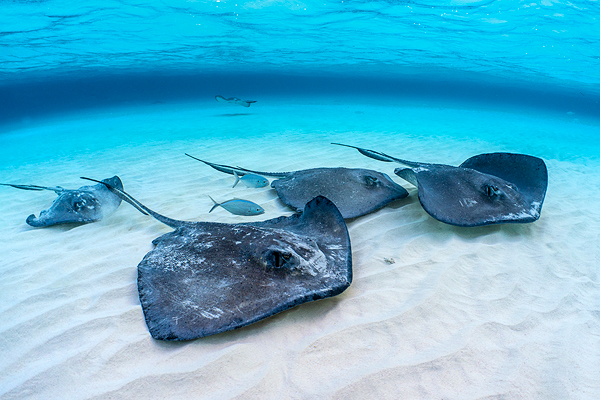
This lens is a real attraction of the Sony system because of its suitability for use with Nauticam’s water corrected lenses. The size enables this to be the only full frame system that can work with the diminutive WWL lenses, as well as the bigger, heavier WACP series. This is not the place to get into domes, versus water corrected lenses. If you want that go here (https://wetpixel.com/articles/review-nauticam-wide-angle-corrector-port/P0), and if you want to continue to labour under the misapprehension that domes are better, that is fine by me – and you will make Nauticam very happy as I am sure domes are far more profitable than these expensive to design and produce unique underwater optics. But I am thrilled that we have them and it is great that Nauticam now offer a real choice. There is always much debate about which of the Nauticam corrected lenses to use. Nauticam design, test and build them and the prize they set tells you everything you need to know about relative image quality! Simply, the bigger and heavier they are the better they are. But a lens you cannot carry to the boat, or fit in the luggage is no use to you. So be reassured that all perform better than domes and choose the one that fits your budget and baggage.

The range offered by the lens is highly suited to many subjects and plenty of Sony photographers do almost all their dives with the 28-60mm and WWL combo.
The WWL can be removed underwater, which sounds great in theory, but is much more complicated in practice and you need to plan where it will be stored, rejig your strobes and change camera settings. Very few people ever remove them. But if you do it allows you to shoot the lens straight, although at 28mm behind a flat port it is not that wide and the corner performance is poor. Also as you zoom it in, the minimum focus distance increases, forcing you to back away. So on its own, without a WWL or WACP, it is not especially useful.
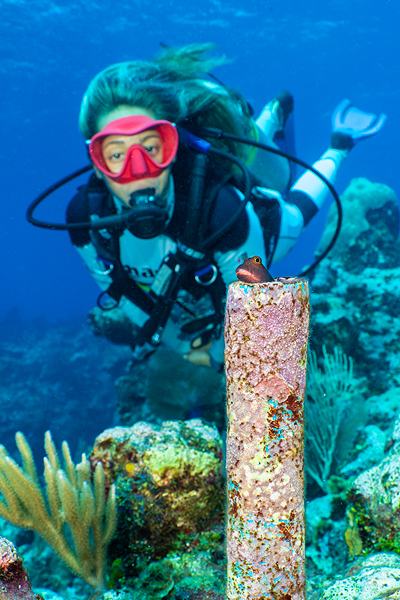
You can also fit a CMC-1 close up lens on the 28-60mm when it is zoomed in to 60mm. This set up is very sharp right across the frame. But it is very inflexible in terms of picture area and magnification, limiting you to taking shots around 1:1 magnification. It also creates a very close working distance, which is restrictive for lighting and might scare some subjects. But it is a good emergency to keep in a pocket for those special encounters.

Sony 90mm macro.
The Sony 90mm is a good all-round focal length for fish portraits and macro. If I had to choose a single focal length for macro this would probably be it. But as an underwater photographer I want more than one focal length, because we always want to work as close to the subject as possible, and need different macro lenses for different sized subjects. Multiple macro lenses also give our macro portfolio a variety of perspectives, important when multiple images are presented together in books or magazines. For example, I brought 60mm, 105mm and 150mm with my D850 to Cayman. I would like Sony to introduce some new G-series macro lenses (a 60mm and 120/150 would be perfect), for a more complete feeling macro series. The 90mm is sharp and focuses fantastically on the a7R V. I have no reservations using this lens. It doesn’t blow you away, like the Canon 100mm L series, but there was no aspect of its performance I was unhappy with.

I used the lens with Nauticam’s SMC-1, SMC-2, CMC-1 and EMWL-160 water corrected macro lens attachments. The CMC-1 is not great with the 90mm, it is sharp in the centre of the frame, but blurs towards the edges. It is not intended for this lens, but I tested it as many people would consider buying one for the 28-60mm and then using it on both (don’t use it with the 90mm if you have an SMC)! I had heard that the SMC-1 vignettes (cuts off slightly in the corners of the frame) with the 90mm, since the SMC-1 was developed for the popular 100/105mm macro lenses of the time. I didn’t find this in any of my shots, using it direct on the port and also on the flipper. I think that the reason for this is that I am an experienced SMC-1 user and I tend to shoot it closer to minimum focus, while the vignetting occurs when you are further away at lower magnification. I suspect Nauticam might make a SMC-1S (for Sony) sometime soon. I have always been amazed by the super-powerful SMC-2, but don’t shoot it much as I find too few subjects the right size for it, and then when I do, depth of field is too limiting. With the slightly wider 90mm lens (compared to my Nikon 105mm) I found the SMC-2 more useable, as the magnification was reduced a little.
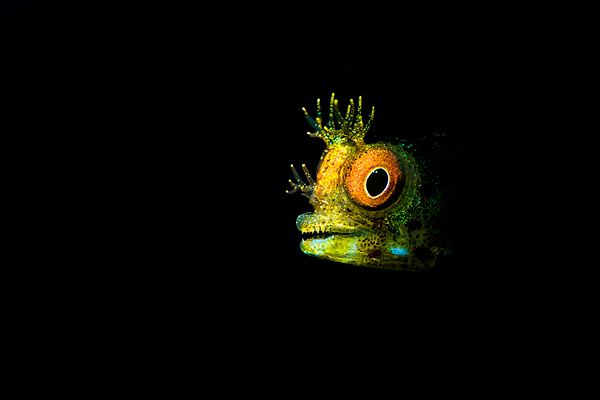
I also shot the 90mm with the EMWL-160 (probe/bugeye/WAM) lens. I used Focus Unit #3 and it performed really well. I had heard people struggling with the Sony’s with the EMWL, but I assume that the new, dedication Focus Unit (the first stage of the EMWL) has solved the problems. There were few subjects for this setup on Cayman’s reefs, but it worked well.

CONCLUSIONS
I arranged to borrow this camera to try the very latest full frame mirrorless, not intending to write a review. It isn’t a revolutionary camera, it looks like its ancestors, shares the sensor with its predecessor and makes use of hand me down tech from the range-topping a1. But with a host of significant improvements and by incorporating best bits from different cameras, Sony haven’t just created a very impressive camera but have also pushed it clearly across a line for me, the line that makes it preferable to shoot to my SLR. The EVF performance makes you celebrate the strengths of EVF photography rather than curse the weaknesses and its autofocus system is the best I have used underwater.
I have only had brief dalliances with them, but none of the Nikons Zs (I’ve not tried the Z9 underwater), nor the Canon R5, nor Sony a7R IV made it across my “preferable to my SLR” line. I’ve not even done a whole dive with the Sony a1, having tried it briefly only in the pool and on the reef. But it feels just like the a7R V inside the housing, so I’d expect this to clear the line too, albeit with a higher entry fee.

In their pomp, I’d have happily said that the Nikon D850 and D500 were both excellent in every area of being an underwater camera. Paradoxically, though I prefer the Sony a7R V, I wouldn’t say this about it. It can do things I’ve not experienced before and has many advantages, but there remain areas of the mirrorless experience that are imperfect.
A notable downside of the Sony system, for me, is the current lens choice for underwater photography. The Canon 8-15mm is sharp and likeable, despite the hunting, but I image that a native Sony fisheye would outperform it. The Sony 28-60mm is the best lens to use with Nauticam wide angle optics and this is a massive plus for the Sony system if, like me, you are signed up to the advantages of Nauticam’s underwater corrected optics. The 16-35mm or Tamron 17-28mm have you covered for rectilinear wide angle, if you like that sort of thing! But for macro the only serious contender is the 90mm, which is very good, but I’d like more options at significantly different focal lengths (say a 60mm and a 120mm) for covering different subjects and giving my macro portfolio more variety.

But all things considered it is hard to argue with the fact that Sony are the current leaders in the new mirrorless world, and this camera is their most attractive model. If you are new to serious UW stills then this camera should be top of the list. The only reason to look at SLRs is if a good one is available for a great second-hand price. If you are an existing Sony shooter then this camera will be highly enticing, but we rarely need to upgrade every generation and I would expect many a7R IV shooters to stick to their cameras for a couple of years and wait for the inevitable R VI. And if you are an SLR shooter, well now is the time to sit up and pay attention. You don’t have to change, but we have to drop the mantra that our current cameras rule. I personally plan to see how the next few months unfold. Canon have a great camera in the R5 and if it has an a7R V rivalling EVF, which a R5 Mk2 easily could have, then that will be a bonafide contender. While a potential Nikon Z8 with Z9 AF, a better sync speed and a7R V comparable sensor and EVF and you’d have three cameras, at good price points, well across the “prefer to SLR” line, to consider. But two of those are vapourware, while the Sony is the future, here today. I’ll certainly miss the Sony a7R V as I return to being an SLR shooter for the next few months!
Finally, perhaps more important than the details of the technical specs, is that the technology incorporated in the Sony a7R V makes it a very easy underwater camera to like. And finding I liked it more than my own camera, well that is perhaps the highest praise of all for a mirrorless camera underwater.
Wetpixel Live on the Sony a7R V
About the Author
Dr Alex Mustard is Wetpixel’s Associate Editor, former marine ecologist and professional underwater photographer. He has been named European Wildlife Photographer of the Year, and is the author of the highly popular Underwater Photography Masterclass. He chairs the judging panel for Underwater Photographer of the Year. www.amustard.com